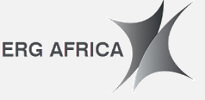Publication: Logistics News
Date: March 2018
SABOT has slashed its lost time injury frequency rate (LTIFR) from 2.86 percent to 0.57 percent within a year, which is indicative of an impressive SHERQ (Safety, Health, Environment, Risk, Quality) programme.
These statistics are even more remarkable when you consider that the company transports hazchem material across dangerous routes between South Africa, the DRC via Zimbabwe and Zambia. Moreover, on long stretches of roads – often damaged by civil war and neglect – SABOT’s fleet of just over 460 superlinks share their daily routes with numerous unroadworthy vehicles and cowboy drivers, pedestrians, livestock and traders, to mention a few.
This is why we opted to dig deeper into the company’s SHERQ story and speak to Corné de Lange, who developed the safety culture now deep in the ERG Africa transport division’s DNA; one that is fast becoming a best practice model.
When the SHERQ Manager joined the logistics arm of ERG Africa late in 2015, his brief was to stop fatalities and reduce time lost through injuries. This involved 13 depots, roughly 3 000km apart and spread throughout SADC, the Southern African Development Community. SABOT has just over 1 000 employees as well as subcontractors, providing transport and related services.
There is a phrase that says “Easier said than done” but with the commitment of the SABOT management team and the support from the MD of the company the programme became embedded and developed on its journey towards safety maturity. With more than 30 years of operational, engineering, construction and safety experience in some 20 countries around the globe, Corné repositioned all the available resources and implemented an aggressive but visible SHERQ management programme, and coached role players to be empowered in safety performance
Elaborating on his approach, Corné says: “I’d identified three key safety principles:
– a right mind-set
– rules simple enough for everyone to understand
– effective communication.
Fact is you cannot expect people to subscribe to a safety programme if they don’t understand their role, and this applies to everybody from executives to cleaners. My challenge was to convert employees to make safety the platform for their daily duties and responsibilities and to re-think it during every new day.”
Corné applied the concept of the 4-Tier Risk Management Program, a tool developed to re-think the mechanics of safety in production and operation. He now customises and presents one-day safety coaching workshops on all sites including every employee on that site, and this is where growth starts. He also believes that empowerment and accountability of employees leads to open reporting and closure communication.
Corné adds: “We erected safety notice boards as an active window where morning talks are presented by alternating supervisors and managers. “This is where we reconsider our safety for the day, and it is normal to have an HOD and even EXCO members to be present.” This, he emphasises, must include talks and safety presentations done by operational decision makers.
“Most importantly,” he elaborates, “we had to get everybody to accept accountability as in “I am my brother’s keeper”. They also had to learn the difference between constructively pointing out deficits without finger pointing.
“We also have a simple pre-task risk assessment tool used by everybody before we issue work, do work or oversee other person’s tasks. Each of us, wherever we go, must assess five safety factors and I established a training pool of those most suited for this.”
The next leg of the programme involved a SHE inspection book, which reflects every supervisor’s responsibility. It is signed weekly/monthly by the HOD and SHERQ. All identified shortcomings are addressed and closed out and heads of departments and site managers compete monthly in a housekeeping competition.
Finally, Corné personalised the old safety tool called the Nertney wheel for each person and coached them on how to evaluate their own safety controls. “This,” he explains, “is a popular and useful graphic that helps achieve safe productivity in the workplace by assessing the following:
1. do I have fit for purpose equipment,
2. do we follow safe work practices all the time,
3. are the employees competent for the task of today, and
4. a controlled work environment to support safety protection.”
He warns, however, that the challenge is always to have all four controls understood and checked “You cannot have one or two in place and think you are good. All four must be in place or people will get hurt.”
Against this backdrop, he speaks of the ongoing approach to challenges that include time constraints and shifting loads. “Our truck drivers and the convoy security chase drivers can be in Durban and Harare over three days and at each site they will be addressed by different people who are trained to inspect, audit and ensure everyone complies with our basic rules.
SABOT’s South African activities or depots are in Durban, Richards Bay, Pomona and Musina. The Zimbabwe sites are at Beitbridge, Harare and Chirundu and in Zambia we have a footprint in Chirundu, Lusaka, Kitwe and Kasumbalesa. The DRC structures are at Kasumbalesa, Lubumbashi, Boss Mining and other mining sites from a client perspective. In all there are 540 truck drivers on our roads for 365 days of the year, covering large distances to ensure good customer service.”
The transport company is a subsidiary of the Eurasian Resources Group (ERG) which operates in 14 countries and employs 80 000 people. Its Africa arm, ERGA, operates mainly in the DRC and Zambia where the key focus is on copper and cobalt mining.
